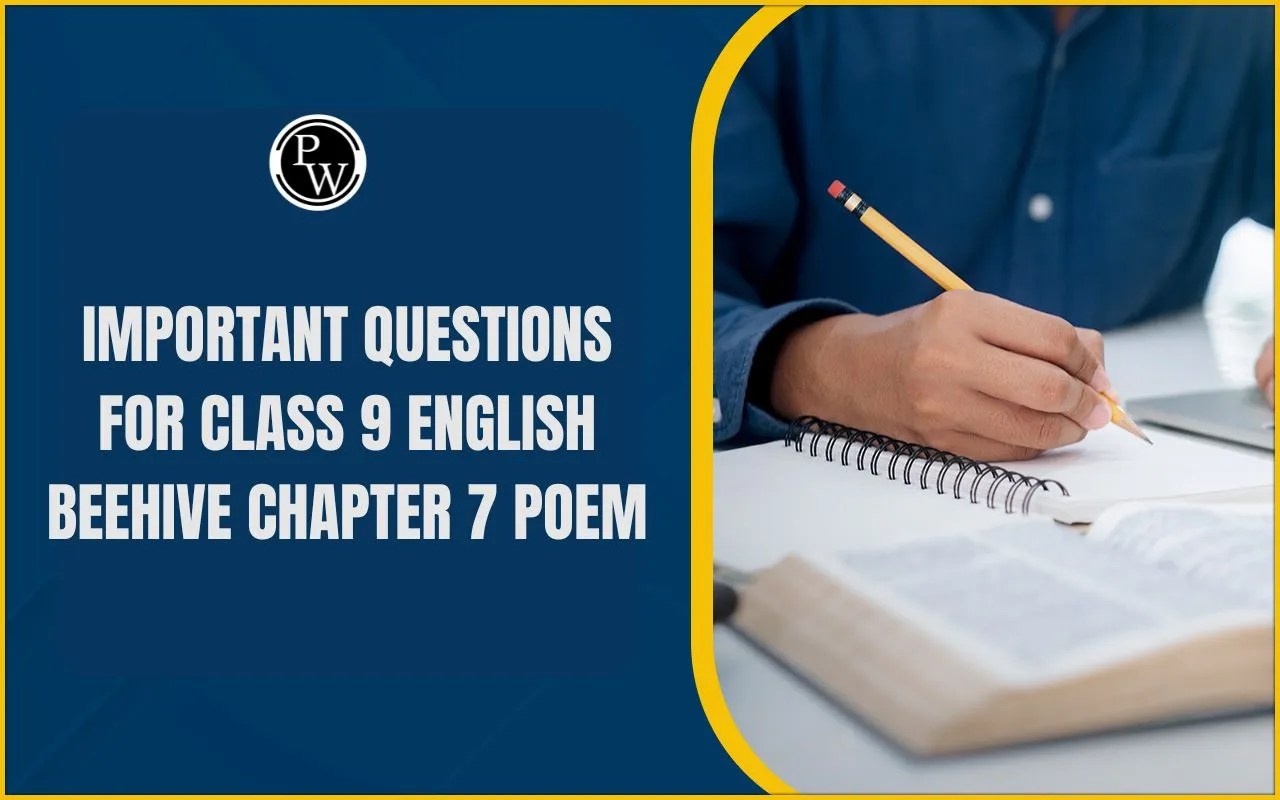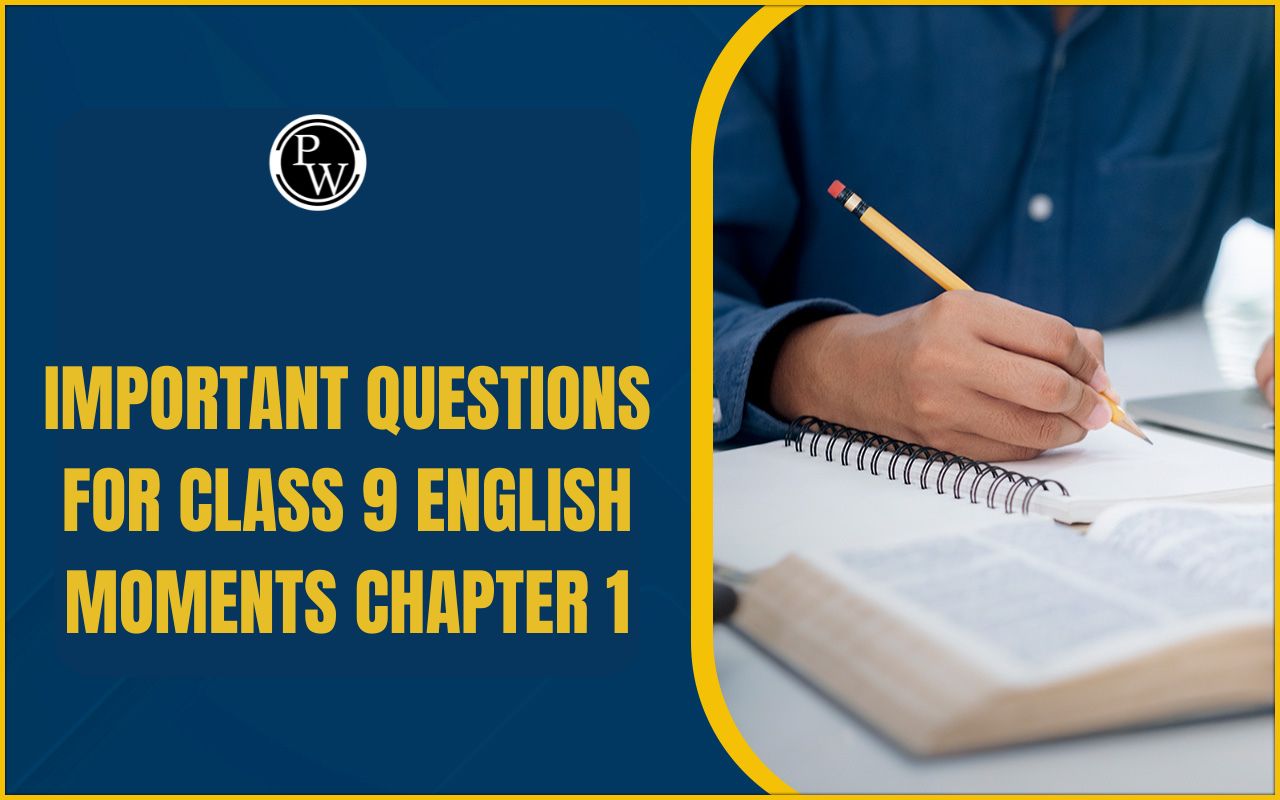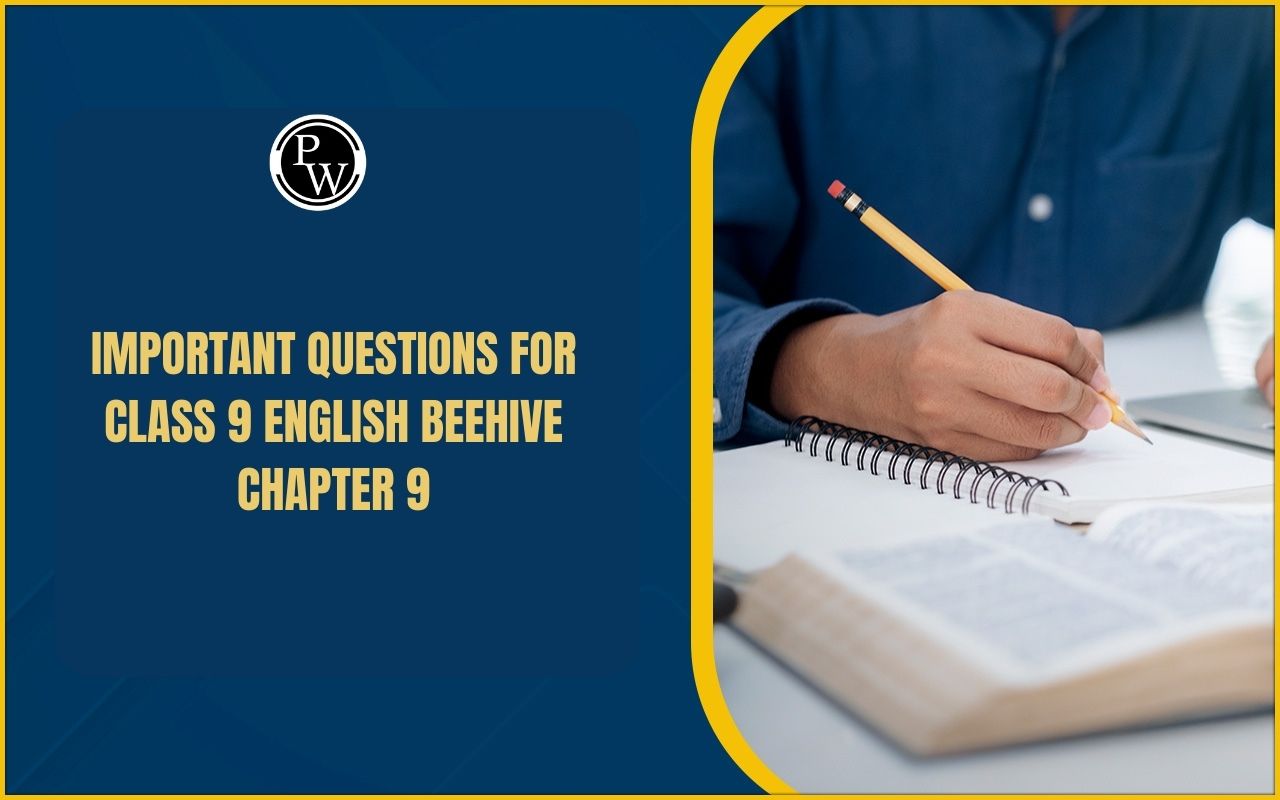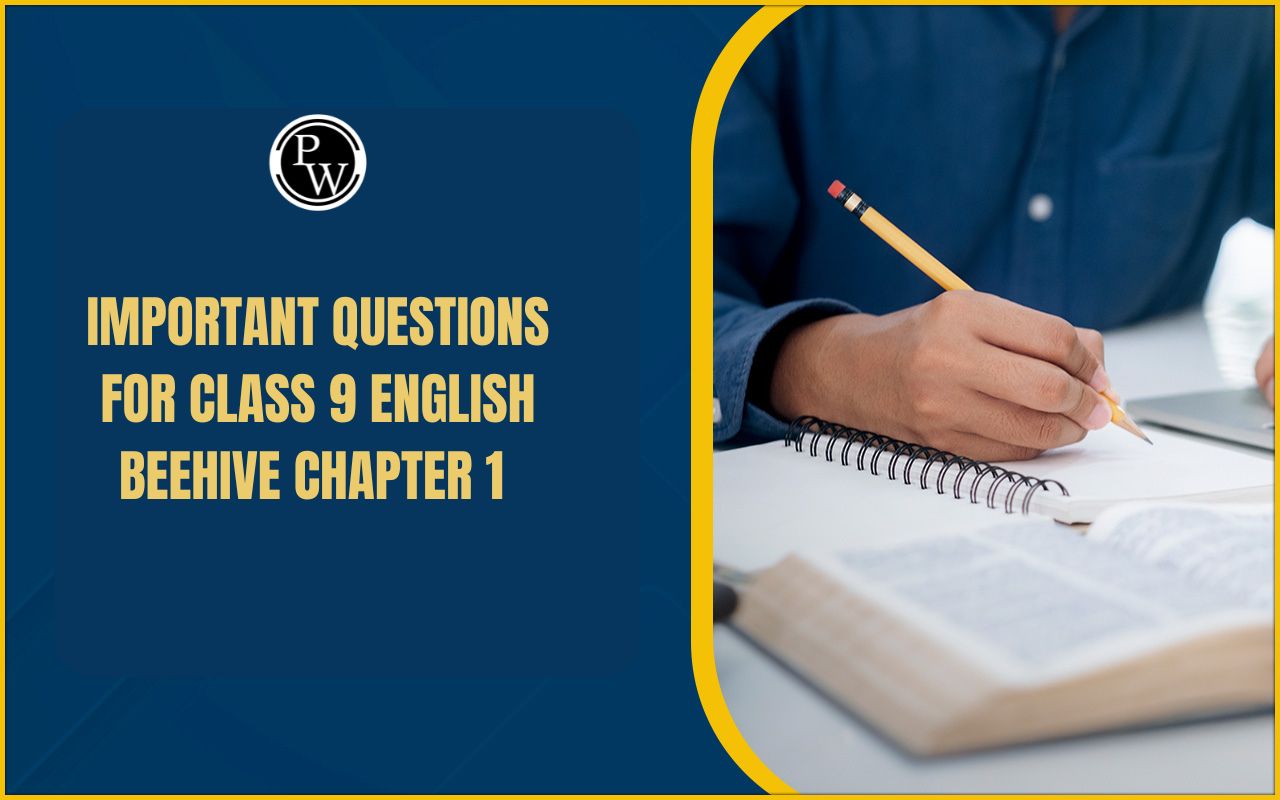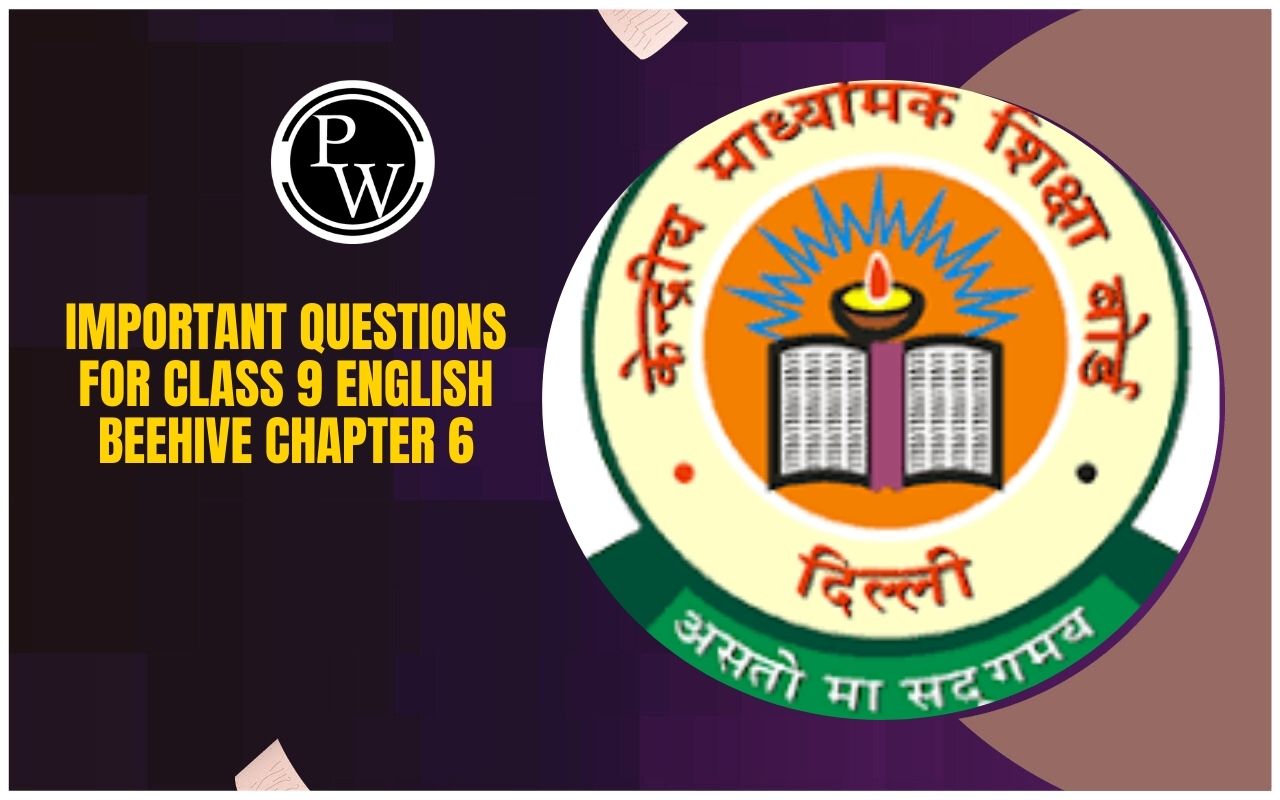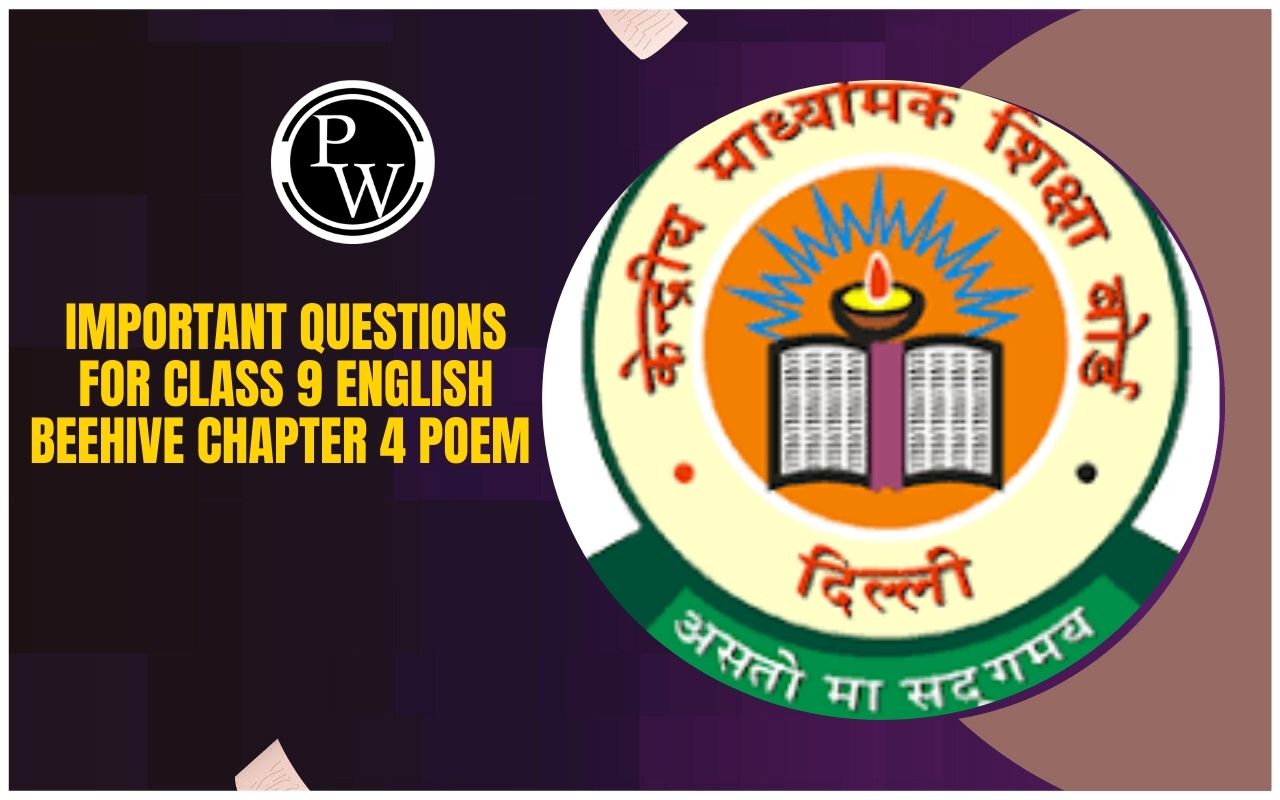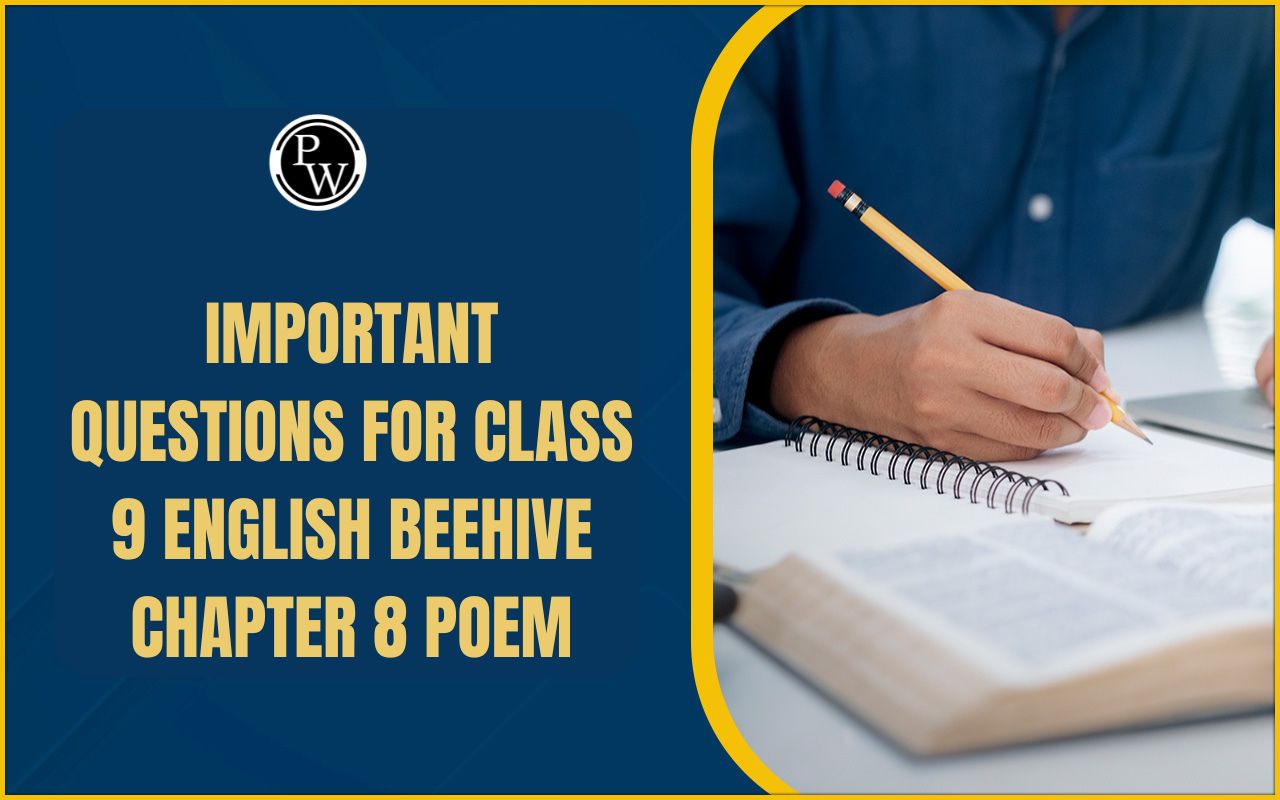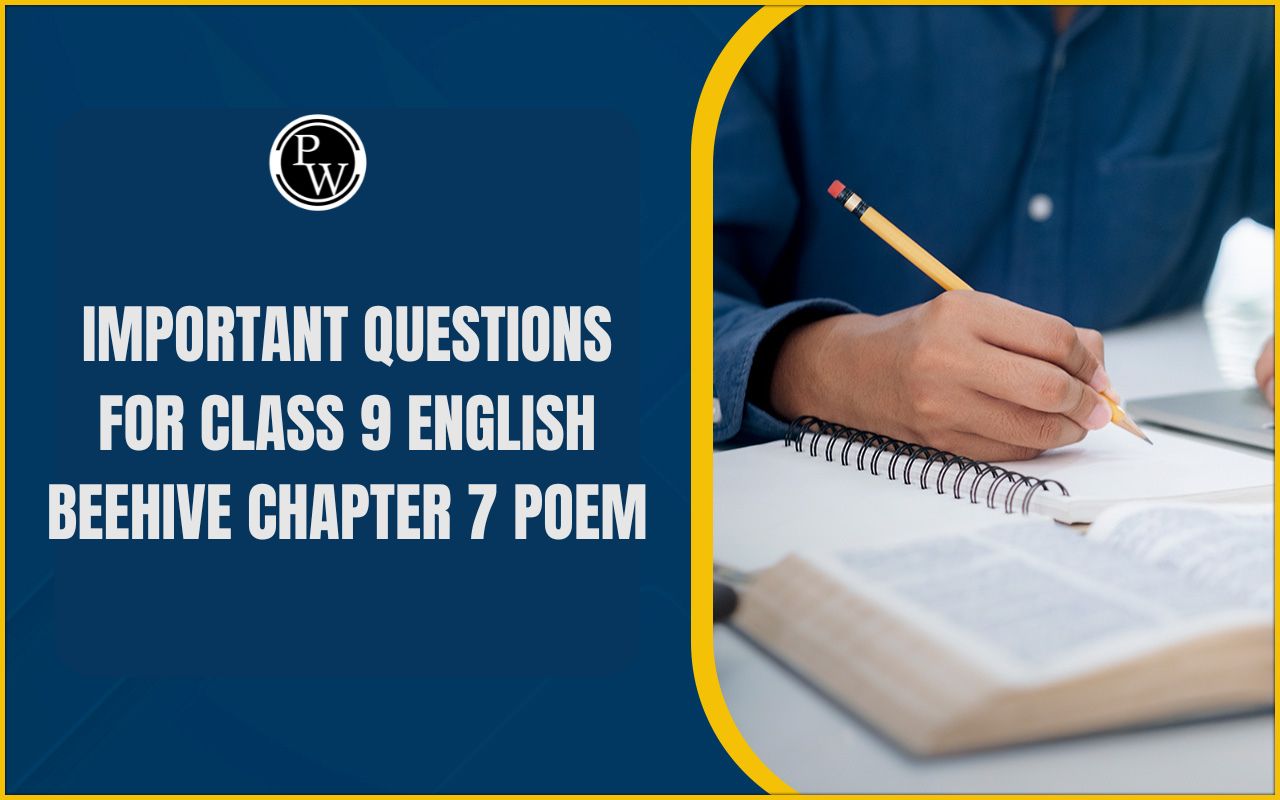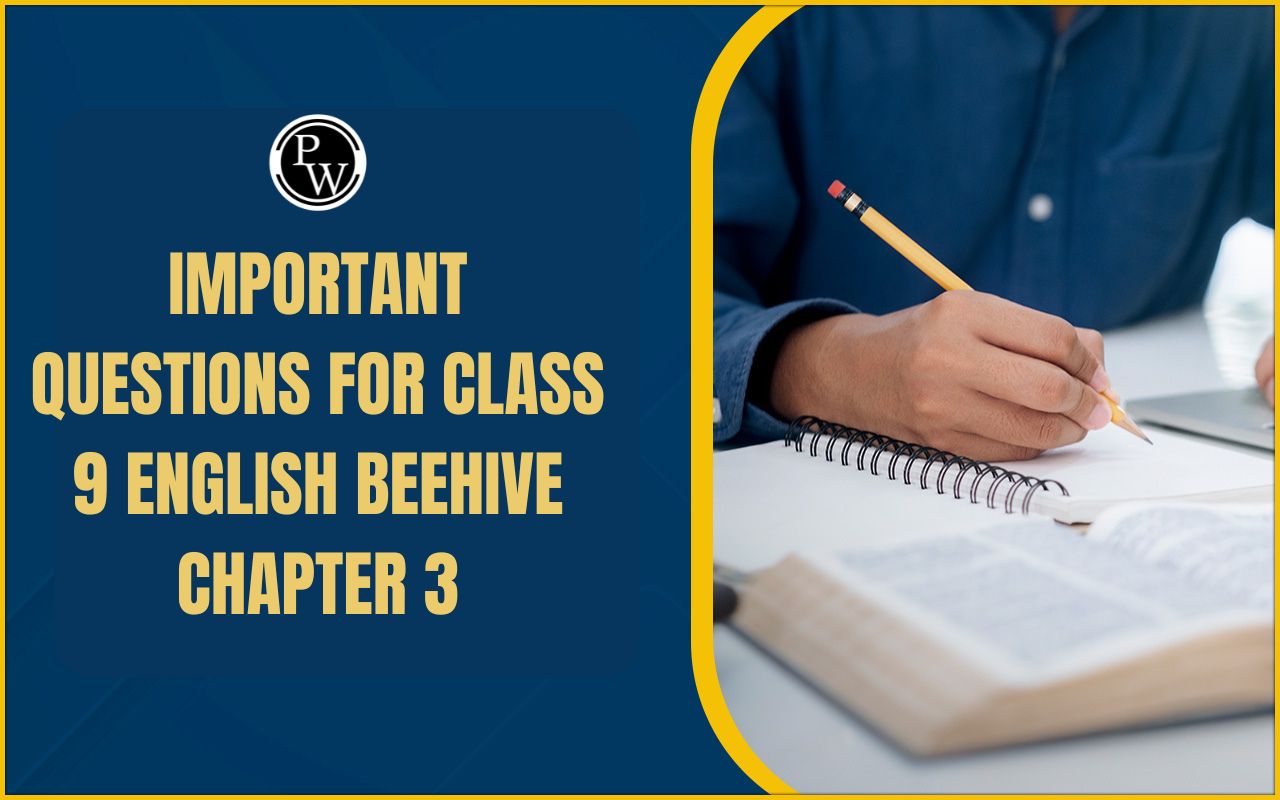
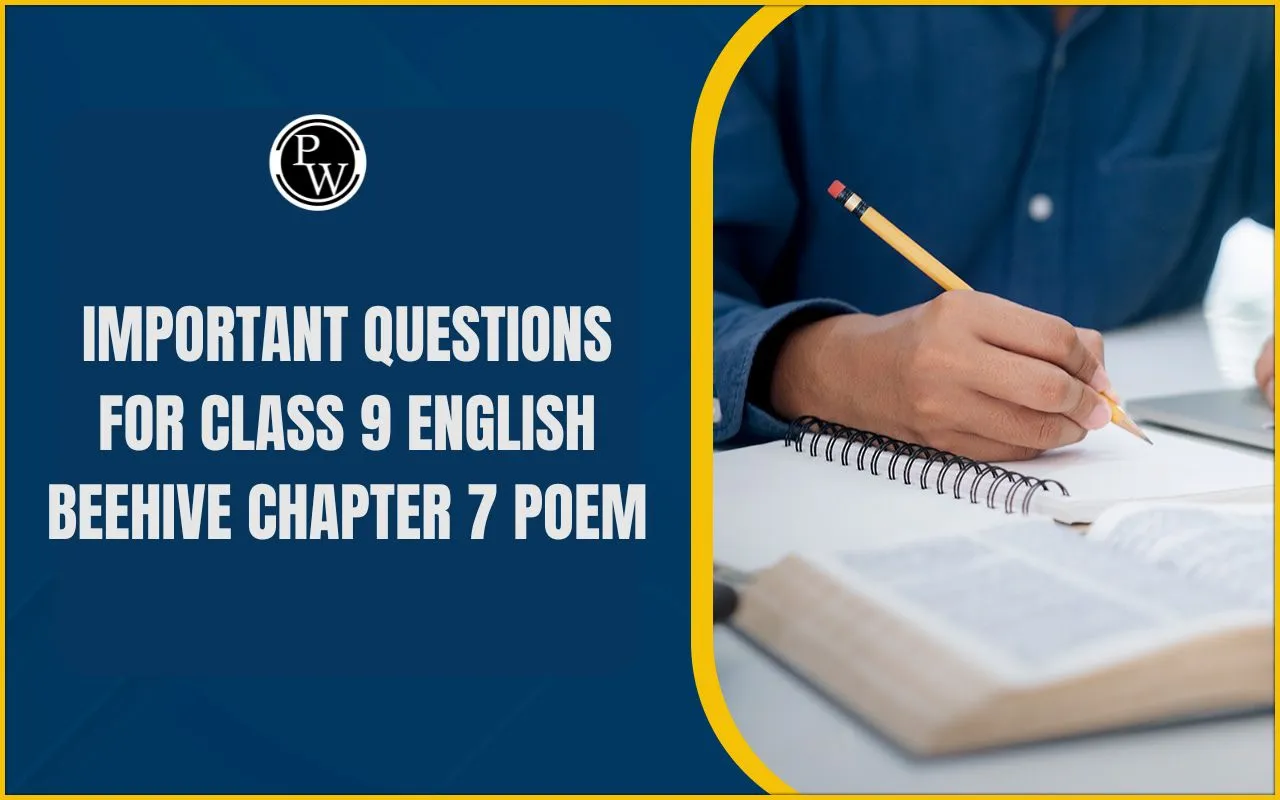
Important Questions for Class 9 English Beehive Chapter 7 Poem On Killing a Tree help students prepare well for exams. The poem teaches that nature is resilient and destroying a tree is not easy because it can heal and grow again.
Questions usually ask about whether a simple jab of a knife can kill a tree, the meaning of bleeding bark, the role of roots, how the sun and air contribute to killing a tree, and the overall message about human destructiveness and respect for nature.
Understanding these points from Class 9 English Beehive Chapter 7 Poem On Killing a Tree will help students answer questions easily and score better.
Class 9 English Beehive Chapter 7 Poem On Killing a Tree
Chapter 7 of the Class 9 English syllabus features the poem On Killing a Tree by Gieve Patel. The poem describes the process and difficulty of destroying a tree, showing that nature is strong, resilient, and not easily destroyed.
It explains that simply cutting or hacking a tree is not enough; its roots must be removed for it to die. The poem uses vivid imagery to show the tree's life, growth, and eventual death when exposed to sun and air after uprooting. It also conveys a deeper message about the human tendency to harm nature and the importance of respecting it.
The poem symbolizes strength, endurance, and the regenerative power of life, making readers reflect on the connection between humans and the natural world.
Important Questions for Class 9 English Beehive Chapter 7 Answers
Below are the Important Questions for Class 9 English Beehive Chapter 7 Poem On Killing a Tree that are designed to help students understand the poet message and the deeper meaning of the poem.
1. Can a “simple jab of the knife” kill a tree? Why not?
Ans. No, a simple jab of the knife cannot kill a tree. The place from where the tree is cut will give out sap and once the wound heals, new branches and leaves will grow from it which will develop into trees.
2. How has the tree grown to its full size? List the words suggestive of its life and activity.
Ans. The tree has grown by consuming nutrients from the Earth, absorbing sunlight, air and water. The words suggestive of its life and activity are – consuming the earth, Rising out of it, feeding Upon its crust, absorbing years of sunlight, air, water.
3. What is the meaning of “bleeding bark”? What makes it bleed?
Ans. Bleeding bark refers to the sap which flows out of the tree’s bark where it is cut. The tree bleeds when it is cut with a knife.
4. The poet says “No” in the beginning of the third stanza. What does he mean by this?
Ans. ’No’ means that the tree will not die by cutting or chopping the trunk.
5. What is the meaning of “anchoring earth” and “earth cave”?
Ans. “Anchoring Earth” means that the Earth supports the tree firmly. “Earth cave” refers to the pit in the Earth where the roots of the tree bind it firmly to the Earth. 6. What does he mean by “the strength of the tree exposed”? Ans. “the strength of the tree exposed” means that upon being uprooted, the most sensitive and important part of the tree i.e. the roots will no longer remain hidden in the Earth.
7. What finally kills the tree?
Ans. The tree dies when it is uprooted. When it is detached from the Earth, it withers, hardens twists and finally dies.
8. Why has the tree’s ‘hide’ been called leprous?
Ans. The bark of the tree is uneven in texture and colour. Leprosy also robs the skin of the leper of its colour and evenness. Hence, the poet has drawn a metaphorical comparison between the discoloured bark of a tree and diseased skin.
9. What message is conveyed by this poem?
Ans. The poem conveys the message that human beings have destructive temperament towards nature, but Mother nature has regenerative powers and cannot be destroyed easily. It has the ability to resurrect itself. Also, the tree teaches us that mere physical assaults cannot ruin us. As long as our root, our soul, is intact we can rise again.
10. How does the sun and the air contribute in the killing of a tree?
Ans. In the poem, the sun and air contribute to the killing of a tree by playing a crucial role in the final stages of its death. After the tree has been uprooted and exposed, the sun and air work together to scorch and wither it. This exposure, which deprives the tree of its natural habitat and sources of nourishment, ensures that the tree does not survive, effectively completing the process of killing it.
11. What would happen if the tree is hacked and chopped?
Ans. If the tree is merely hacked and chopped, it does not result in its death. The poem describes how a tree will heal from these wounds, with bark and twigs growing back. The poet emphasizes that simple hacking is not enough to kill a tree; instead, it requires a much more brutal and thorough approach, indicating the resilience of the tree.
12. After reading the poem, what similarities can we draw between trees and some great people of yesteryears?
Ans. After reading the poem, we can draw similarities between trees and some great people of yesteryears in terms of their resilience and endurance. Just as trees withstand harsh conditions and attempts to cut them down, great historical figures have endured adversity and opposition yet continued to influence and inspire long after their initial struggles. Both trees and these figures demonstrate the power of persistence and the capacity to survive and thrive despite challenges.
13. Write the critical appreciation of the poem ‘On Killing a Tree’?
Ans. "On Killing a Tree" by Give Patel is a poignant and thought-provoking poem that explores the theme of resilience in nature juxtaposed against human violence and short-sightedness. Through the extended metaphor of killing a tree, Patel illustrates not just the physical effort required to destroy a tree but also the cruelty involved in such an act. The detailed and vivid descriptions invite readers to consider the ethical implications of man’s destructive actions against nature. The poem's powerful imagery, emotional depth, and the slow, painful process described therein serve as a metaphor for other forms of violence, making it a compelling critique of human behavior and a call for greater respect and care for the natural world.
14. What does the root of the tree look like when it is pulled out of the earth-cave? What happens to it when it is left exposed?
Ans. When the root of the tree is pulled out of the earthcave, it is described as being "white" and "wet," indicating its exposure and vulnerability after being forcefully removed from its natural, nourishing environment. Once exposed, these roots, which are critical for the tree’s survival, are subjected to the harshness of the sun and air, which eventually leads to their withering and the tree's death. This exposure is symbolic of the final, fatal disconnection of the tree from its life sources.
15. How do the air and the sun contribute to killing the tree?
Ans. The sun and air, crucial for a tree's growth, will not harm it under normal circumstances. However, if a tree's roots are left exposed to these elements, they can become hardened and withered, ultimately leading to the tree's death.
16. Describe the healing power of the tree that does not allow it to die quickly.
Ans. Killing a tree is a lengthy process. Every tree possesses a natural resilience that prevents easy destruction. When its bark is sliced with a knife, the wound eventually heals. Soon, green twigs sprout near the ground. If these are not removed, the tree will regrow to its original size.
17. (A) Can a “simple jab of the knife” kill a tree? Why not?
Ans: No, a simple jab of knife does not have the ability to kill the tree. It has to go through various processes. If its root is not removed from the earth, it will sprout again.
(B) How has the tree grown to its full size? List the words suggestive of its life and activity.
Ans: The tree consumes the earth, and rises out it feeding upon its crust. It absorbs years of sunlight, air, and water.
Important Questions On Killing A Tree Chapter 7 PDF Download
Important Questions for Class 9 English Beehive Chapter 7 Poem are prepared to help students understand the poet message and the deeper meaning of the poem. Students can download the PDF of these important questions below for easy access, thorough preparation, and quick revision before exams.
Important Questions for Class 9 English Beehive Chapter 7 Poem
Study without using the internet
Benefits of Using Important Questions for Class 9 English Beehive
Here are the Benefits of Using Important Questions for Class 9 English Beehive Chapter 7 Poem On Killing A Tree:
-
Helps students understand the poet's message and the deeper meaning of the poem.
-
Highlights key concepts such as the tree's resilience, the meaning of bleeding bark, the role of roots, and the effects of sun and air on the tree.
-
Aids in quick and effective exam preparation and revision.
-
Boosts students' confidence to answer questions accurately.
-
Enhances understanding of the poem's themes, imagery, and moral lessons.
-
Ensures better performance in exams through focused study.
Important Questions for Class 9 English Beehive Chapter 7 Poem FAQs
What are the important questions for Chapter 7 Poem On Killing a Tree?
How do these questions help students?
Can these questions improve exam performance?
Do these questions cover the deeper meaning of the poem?

